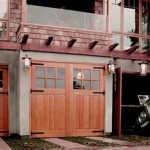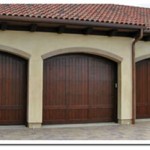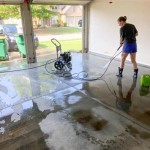How to Paint a Metal Garage Door to Look Like Wood
Achieving the warm aesthetic of a wooden garage door without the associated maintenance and cost is possible through a faux wood painting technique applied to a metal garage door. This process involves careful preparation, the application of a base coat, and the meticulous creation of a wood grain effect using specialized tools and techniques. The result is a durable and visually appealing garage door that mimics the appearance of real wood.
This article provides a comprehensive guide on how to transform a metal garage door into a convincingly wood-like surface. This includes detailed instructions on surface preparation, paint selection, graining techniques, and sealing for long-lasting protection.
Preparation: The Foundation for a Realistic Finish
The success of any paint project, especially one attempting to simulate a natural material, hinges on thorough preparation. A clean, smooth surface is essential for proper paint adhesion and a realistic-looking wood grain. This stage encompasses cleaning, sanding, and priming the metal garage door.
Cleaning: Begin by washing the entire garage door with a mixture of warm water and a degreasing cleaner. Automotive degreasers work well for removing oil, grease, and other contaminants that may have accumulated on the surface. Use a scrub brush or sponge to thoroughly clean all sections of the door, paying particular attention to areas around handles, hinges, and edges. Rinse the door completely with clean water and allow it to dry fully before proceeding to the next step. Any residual dirt or grease will compromise the paint's adherence and could lead to peeling or chipping.
Sanding: Even if the existing paint on the garage door appears to be in good condition, sanding is crucial for creating a slightly roughened surface that promotes paint adhesion. Use a medium-grit sandpaper (around 120-grit) to lightly sand the entire door. Focus on removing any imperfections like rust spots or peeling paint. If there are areas with significant rust, use a wire brush or rust remover to eliminate the corrosion completely before sanding. After sanding, wipe down the door with a tack cloth to remove all sanding dust. Failure to remove the dust will result in a bumpy and uneven paint finish.
Priming: Applying a primer is an indispensable step in painting a metal garage door. Primer not only promotes paint adhesion but also provides a uniform surface for the subsequent layers of paint. Choose a primer specifically formulated for metal surfaces; these primers often contain rust inhibitors, which are particularly important for preventing rust formation on metal surfaces. Apply the primer in thin, even coats using a brush, roller, or spray gun. Multiple thin coats are preferable to one thick coat, as thick coats are prone to dripping and uneven drying. Allow the primer to dry completely according to the manufacturer's instructions before moving on to the base coat.
Achieving the Wood Grain Effect: Tools and Techniques
The wood grain effect is the heart of this project. Several tools and techniques can be employed to create the desired visual texture. The most common method involves using a wood graining tool, also known as a rocker or a wood grain comb.
Base Coat Application: Select a base coat color that resembles the undertones of the wood you are trying to emulate. Light browns, tans, or even shades of gray can serve as excellent base colors. Apply the base coat using a brush, roller, or sprayer, ensuring even coverage across the entire door. As with the primer, multiple thin coats are better than a single thick coat. Allow the base coat to dry completely before proceeding to the graining process. The drying time will vary depending on the type of paint used and the ambient temperature and humidity.
Glaze Application: The glaze is the key to creating the wood grain effect. Choose a glaze color that contrasts with the base coat. Darker browns or umber shades typically work well for simulating wood grain on a lighter base coat. Apply the glaze in sections, working on one panel of the garage door at a time. It is crucial to work quickly, as the glaze needs to be wet while creating the wood grain effect. Use a brush or roller to apply a thin, even layer of glaze to the section you are working on.
Wood Graining Techniques: There are several techniques for creating the wood grain, depending on the desired look and the tools available. * Wood Graining Tool: This tool is specifically designed for creating wood grain patterns. After applying the glaze, hold the wood graining tool at an angle to the surface and rock it back and forth while moving it along the panel. This creates a series of lines and patterns that mimic the grain of wood. Experiment with different angles and pressures to achieve the desired effect. Overlapping the patterns slightly will create a more realistic look. * Rag Rolling: For a more subtle grain effect, use a clean rag to roll or dab over the wet glaze. This will remove some of the glaze and create a textured surface. Experiment with different rolling and dabbing techniques to achieve the desired effect. * Brush Strokes: A simple technique involves using a dry brush to create lines and patterns in the wet glaze. Drag the brush across the surface in a slightly irregular manner to simulate the grain of wood.
Consistency and Variation: While consistency is important, strive for variation in the grain pattern to achieve a more natural look. Vary the pressure and angle of the wood graining tool, or use different techniques in different areas of the door. Observe real wood grain patterns for inspiration and try to replicate the natural variations in color and texture.
Correcting Mistakes: If you are not satisfied with the grain pattern, simply wipe off the glaze with a clean cloth and start over. The beauty of working with glaze is that it allows for easy corrections until you achieve the desired effect.
Sealing and Protection: Ensuring Longevity
After achieving the desired wood grain effect, sealing the painted garage door is crucial for protecting the finish and ensuring its longevity. Sealing provides a protective barrier against the elements, preventing fading, chipping, and peeling.
Selecting a Sealer: Choose a clear, exterior-grade sealer specifically formulated for painted surfaces. A water-based polyurethane sealer is a good option, as it provides excellent protection against UV rays and moisture while being easy to apply and clean up. Ensure that the sealer is compatible with the type of paint and glaze used. Read the manufacturer's instructions carefully before applying the sealer.
Application of the Sealer: Apply the sealer in thin, even coats using a brush, roller, or sprayer. Like with the primer and base coat, multiple thin coats are preferable to a single thick coat. Allow each coat to dry completely before applying the next. Follow the manufacturer's recommendations for drying times. Typically, two to three coats of sealer are sufficient for providing adequate protection.
Maintenance: Even with a properly sealed finish, regular maintenance is important for prolonging the life of the painted garage door. Wash the door periodically with a mild detergent and water to remove dirt and grime. Inspect the door regularly for signs of damage, such as chipping or peeling paint. Touch up any damaged areas promptly to prevent further deterioration. Reapply the sealer every few years, or as needed, to maintain its protective properties.
By following these steps carefully and with attention to detail, a metal garage door can be transformed into a stunning focal point that mimics the beauty and warmth of real wood. The result is a cost-effective and durable alternative to a traditional wooden garage door, adding curb appeal and value to the home.

Giani Wood Look For Garage Doors Full Demo

Create A Faux Wood Garage Door With Gel Stain Crazy Life Littles

Create A Faux Wood Garage Door With Gel Stain Crazy Life Littles

Faux Wood Door Gel Stain Diy How To Make Your Look Like

Diy Garage Door Makeover With Stain Domestically Speaking

Diy Garage Door Makeover With Stain Domestically Speaking

Staining Your Metal Garage Door Anderson Doors

Metal Garage Painted To Look Like Wood Door Design Doors House

How To Paint A Door Look Like Wood 7 Shades Choose From

Faux Wood Garage Door Tutorial Prodigal Pieces
Related Posts








